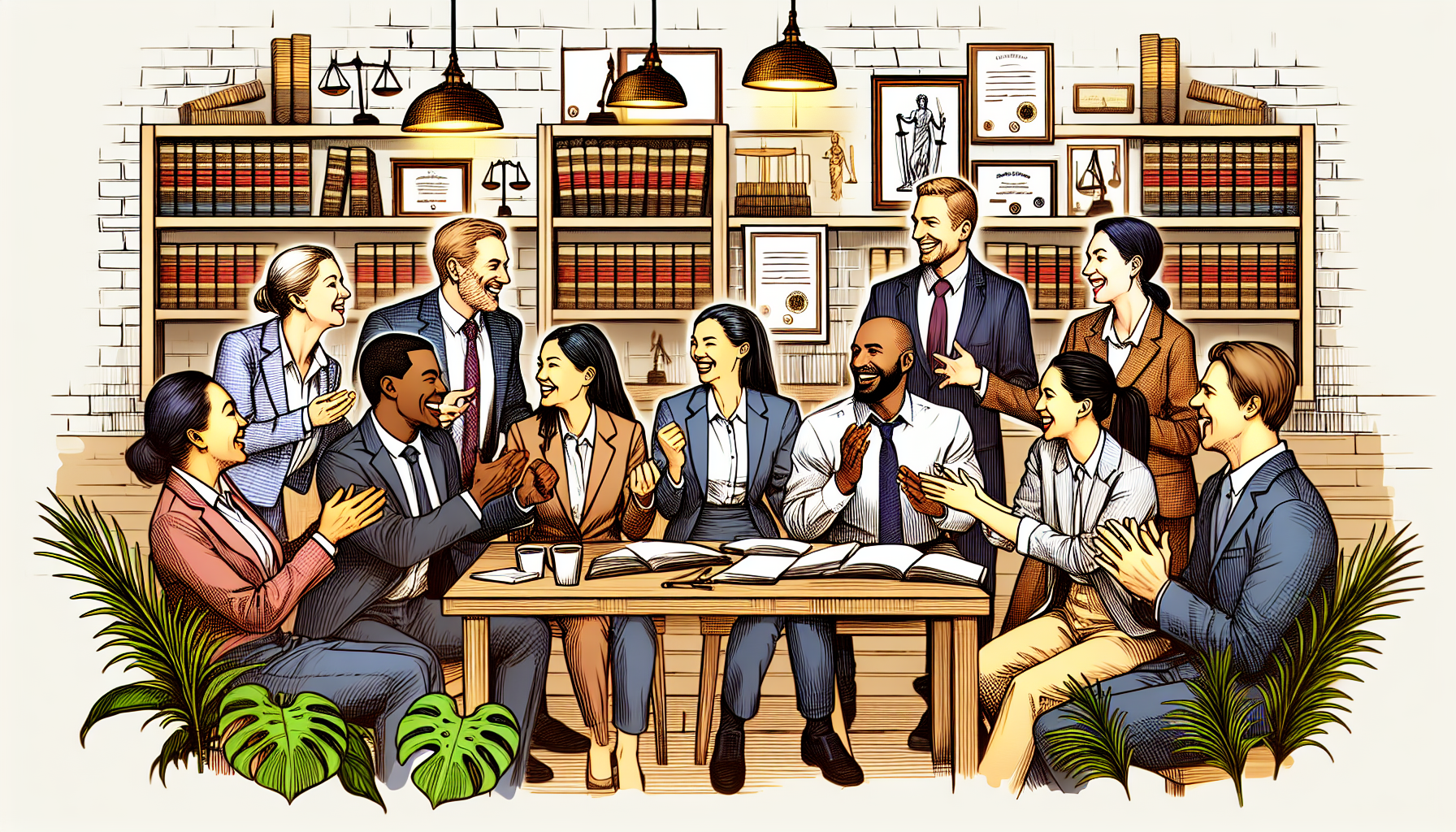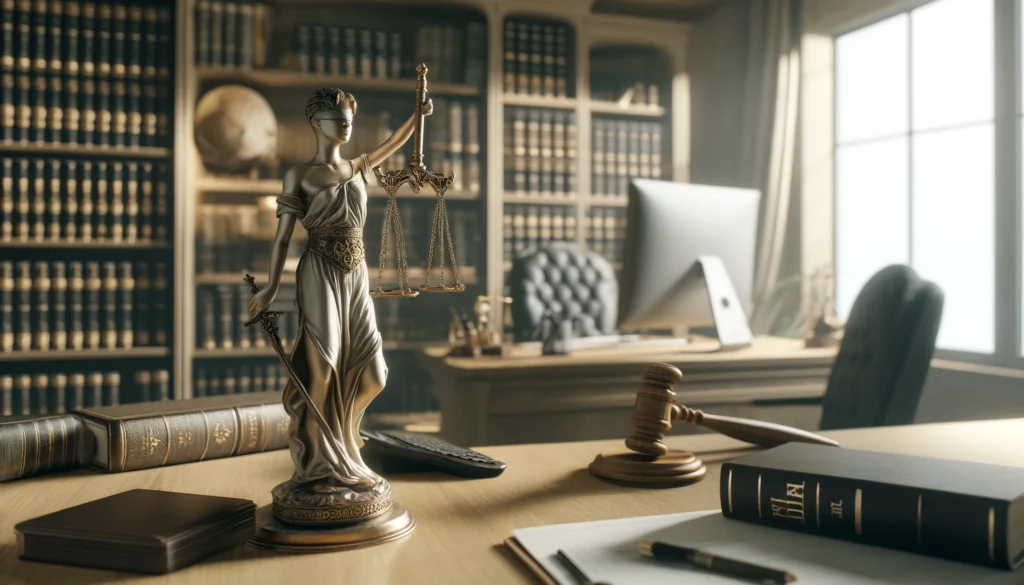
A New Era in Legal Drafting
The legal landscape has undergone significant transformation over the past few decades. Traditional methods of legal drafting, characterized by meticulous manual work, have been gradually supplanted by digital solutions, enhancing both speed and accuracy. The advent of large language models (LLMs), such as OpenAI’s ChatGPT, marks a pivotal point in this evolution. These advanced AI systems possess the capability to expedite drafting processes, opening new frontiers in criminal proceedings and beyond.
As legal professionals increasingly turn to AI for guidance, the potential of LLMs to revolutionize legal drafting becomes ever more apparent. By leveraging AI, law firms can ensure better utilization of time and resources, thereby enhancing overall efficiency.
Why Speed Matters: The Value of Efficiency in Legal Settings
In the fast-paced world of law, efficiency is paramount. Promptly drafting legal motions can significantly impact the outcome of a case, especially when dealing with tight deadlines and high stakes. Streamlined processes not only benefit legal professionals but also serve justice more swiftly.
Paralegals play a crucial role in optimizing these workflows, assisting in the drafting process and ensuring documents are accurate and compliant. By incorporating tools like ChatGPT, paralegals can further enhance their efficiency, allowing for quicker and more precise drafting.
Also read:
Meet ChatGPT: Your Digital Legal Assistant
ChatGPT, developed by OpenAI, is a sophisticated AI model trained on vast amounts of text data. This enables it to understand and generate human-like text, including complex legal language. ChatGPT can assist legal professionals by generating drafts of legal motions, suggesting edits, and even conducting preliminary legal research.
Utilizing ChatGPT offers several benefits:
- Time-saving: Rapid generation of drafts minimizes the time spent on manual writing.
- Consistency: Ensures uniformity in tone and style across documents.
- Accessibility: Provides instant assistance, reducing the reliance on multiple resources.
By integrating ChatGPT into their workflows, legal professionals can harness the power of AI to enhance productivity and precision.
Also read:
Crafting the Perfect Prompt: The Art of Asking the Right Questions
The effectiveness of ChatGPT largely depends on the quality of the prompts provided. Well-constructed prompts lead to more relevant and accurate outputs, making the drafting process smoother.
Here are some key techniques for creating effective prompts:
- Specificity: Clearly state the required document type, purpose, and key elements.
- Context: Include background information to frame the request adequately.
- Narrow Focus: Avoid overly broad questions that could lead to irrelevant responses.
Consider the following examples:
- Good Prompt: “Draft a motion to suppress evidence based on unlawful search and seizure under Fourth Amendment, citing relevant case law.”
- Bad Prompt: “Write something about evidence in court.”
The detailed prompt ensures that ChatGPT produces a draft aligned with specific legal standards and contexts, fostering a more efficient drafting process.
Also read:
Step-by-Step Guide: Drafting a Motion in Record Time
To leverage ChatGPT effectively, a structured workflow can be immensely beneficial. Here’s a step-by-step guide to drafting a legal motion using ChatGPT:
- Initial Query: Begin with a detailed prompt. For example, “Create a motion for continuance due to the unavailability of a key witness. Mention Rule 56 of the civil procedure rules.”
- Review Output: Carefully review the draft generated by ChatGPT. Check for any inconsistencies or errors.
- Refinements: Make necessary adjustments to the draft. Add any jurisdiction-specific requirements or client-specific details.
- Peer Review: Have a paralegal or colleague review the draft to ensure accuracy and compliance with legal standards.
- Finalization: Integrate any final comments or changes before submitting the document to the court.
Integrating ChatGPT into existing processes can also enhance efficiency. For instance, using the AI tool in conjunction with document management systems can streamline the filing and retrieval of drafts.
Key checkpoints include:
- Verification of legal citations and references
- Review of factual accuracy
- Ensuring compliance with filing requirements
Through careful integration and multiple layers of review, legal professionals can ensure the reliability and precision of documents generated by ChatGPT.
Also read:
Addressing Legal Specificities: Fine-Tuning Your Output
The legal domain is characterized by its specificity and complexity. To ensure that outputs from ChatGPT meet jurisdiction-specific requirements, customization is crucial.
When using ChatGPT, it’s essential to:
- Incorporate Case Law: Provide specific cases to be cited.
- Detail Statutory Requirements: Mention pertinent statutes and legal provisions.
- Consider Precedents: Refer to previous decisions that align with the case at hand.
By tailoring prompts with precise legal details, legal professionals can obtain drafts that are not only accurate but also jurisdictionally compliant. This ensures that the final documents uphold the standards expected in legal proceedings.
Also read:
Quality Control: Ensuring Accuracy and Consistency
Ensuring the accuracy of information generated by ChatGPT is paramount. Employing robust quality control mechanisms can aid in verifying the correctness and consistency of drafts.
Strategies include:
- Cross-Verification: Manually check the generated content against authoritative legal sources.
- Consistency Check: Ensure uniformity in language, tone, and style across the document.
Through diligent review and verification, legal professionals can maintain the high standards expected in their work.
Also read:
Beyond Drafting: Broader Applications in Legal Work
ChatGPT’s capabilities extend beyond drafting legal motions. The AI tool can also assist in various other facets of legal work, including:
- Legal Research: Quickly gathering information on specific legal areas.
- Client Communication: Drafting client correspondence and updates.
- Document Review: Analyzing and summarizing extensive legal documents.
The wider application of ChatGPT can lead to more efficient and effective legal practices, aiding attorneys in various administrative and substantive tasks.
Also read:
Future Prospects: The Road Ahead for AI in Legal Proceedings
The integration of AI in legal practices is just the beginning. As technology advances, the role of AI in law is expected to expand, facilitating greater efficiencies and enhanced legal service delivery.
An open-minded approach towards technological advancements is crucial. Embracing AI can lead to innovative solutions that redefine traditional legal workflows, ultimately strengthening the practice of law.
Also read:
Conclusion: Redefining Efficiency in Legal Workflows
The integration of ChatGPT in legal drafting marks a significant step forward in enhancing efficiency and precision. By leveraging AI, legal professionals can optimize their workflows and address the evolving demands of the legal landscape.
Experimenting with ChatGPT and embracing technological advancements can lead to more efficient, accurate, and consistent legal practices.


